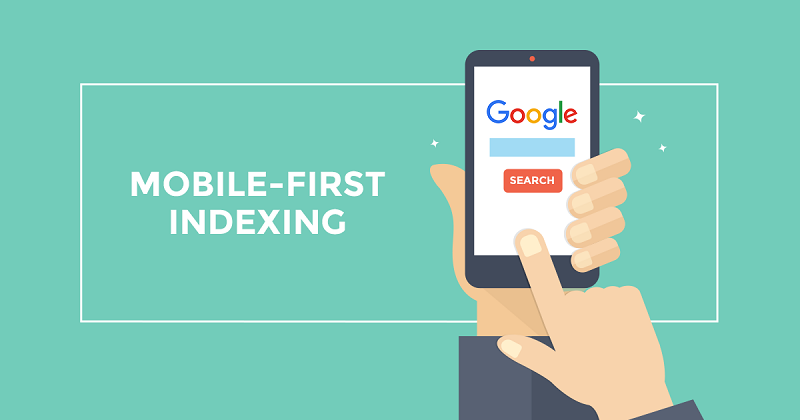Big changes always seem to bring upheaval, fear, and hand-wringing.
Such is the case with Google’s switch to mobile-first indexing.
What does it really mean?
How does it affect advertising and PPC efforts?
What’s happening here?
The good news is that we have some direct answers to these questions.
Although we can’t say for sure what stage we’re at in Google’s current ranking reorganization, they claim it isn’t a big deal. Moreover, we know it’s happening, and that we should respond to it immediately.
Let’s take a look at the pertinent facts and the next steps for you.
What Exactly Is Mobile-First Indexing?
Related article: 4 tips for creating mobile-first content that converts
Simply put, mobile-first indexing is indeed exactly what it sounds like: Google will now crawl and index mobile sites first.
That said, mobile-first doesn’t mean mobile-only.
If your website isn’t mobile-friendly, Google will still index the pages on your desktop site.
Why Mobile-First?
As far back as 2016, we understood that mobile was the wave of the future when mobile internet usage surpassed desktop worldwide.
Accordingly, we can see where Google is coming from with this change.
Google is, after all, here to serve its users.
Users don’t care where advertisers spend their time. The user wants sites, services, and advertising available where they are … and where they are is on the go.
Is Mobile-First Indexing Already in Play?
Yes.
- Google’s John Mueller “confirmed” the beginning of the rollout in October.
- After roughly a year of testing, Google officially announced the rollout of mobile-first indexing in March.
- Google started sending notifications to webmasters that have been migrated to mobile-first indexing in April.
The lack of hard evidence regarding whom mobile-first indexing currently affects should be a strong motivation to jump on the bandwagon.
Why?
Because if you’re one of the companies affected, your online advertising and pay-per-click efforts may take a big hit.
How Does Mobile-First Indexing Affect Your Advertising Approach & Goals?
Here’s the 10-second choose your own adventure summary of how ads work: You place an ad. Ad runs elsewhere on the web. Consumer clicks. Consumer comes to your site.
Do you: Give them an amazing user experience that directs them right to the relevant product or service for which they came or keep them dangling with glacial load times, invisible content, terrible copy and confusing navigation?
SEO PowerSuite. FREE SEO Tools That Deliver Results.
Easy-to-use. Effective. Reliable. Improve your website rankings with SEO PowerSuite.
In case you’re wondering, that was rhetorical. Given the latter experience, the user will bounce every time.
Poor UX not only loses you a conversion, though. It also leads to penalties from ad platforms. If users bounce in droves, your PPC ad quality score will plummet.
That will lead to higher costs per click, which can decimate your advertising budget. This, in turn, will mean lower conversions and a much higher cost per conversion or CPC.
Ultimately, over time, this will negatively impact the total number of campaign conversions, leading to a higher cost per acquisition (CPA) — the cost of a lead or sale.
In other words, it will lead to very bad things.
Next Steps: Check Your Site Configuration
Related article: How to optimize your mobile design for search
The good news is that if you have a responsive site or a dynamic serving site where both content and markup are equivalent across desktop and mobile you shouldn’t have to do anything.
However, if you have a site configuration where there is a substantial difference between your markup and content across desktop and mobile, then you should invest in a responsive site.
While this may sound like silly advice, more companies need it than you might think. Too many companies still have mobile sites with:
- Glacial load speeds.
- Junk JavaScript and bloated HTML.
- Unresponsive design.
- Popups that block content.
- Low-resolution images.
- Nebulous, keyword-stuffed copy.
- Tiny, imperceptible type.
Apparently, some webmasters still think it’s 1997. Al Gore invented the internet a long time ago.
We can do better than this and, now, thanks to mobile-first indexing, we’ll have to.
But what if you can’t build a responsive or dynamic site immediately? Your best bet is to make the following changes to your site:
- Serve structured markup and avoid adding markup that isn’t relevant to the content.
- Invest in Accelerated Mobile Pages (AMP) and particularly AMP ads, which typically load up to 5 seconds faster than non-AMP ads.
- Use the Robot.txt tool to confirm your Googlebot can access the mobile version of your site.
- Make sure to verify your mobile site in Search Console as well as your desktop site.
Also, be sure to track your metrics. If you’re seeing reduced traffic or higher bounce rate, get on it. Because Google’s going to get on you if you don’t.
Ride Out the Changes the Smart Way
As with any change, we’ll need more time to ascertain what this means for the industry.
In the meantime, the best approach to dealing with Google on Google’s terms is to use a cutting-edge advertising strategy, heavily informed by data science. Such techniques are better able to cope with new changes without the lag time created by fallible human brains.
Whatever approach you choose, don’t make the mistake of thinking this doesn’t apply to you until you get that webmaster notification. Once you get it, the ball is already rolling.
If you don’t want it to dent your PPC and ad efforts, you need a mobile-first strategy in place beforehand. So get it locked and loaded, and get ready to win the day.
_____
by Chaitanya Chandrasekar
Source: searchenginejournal.com


